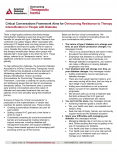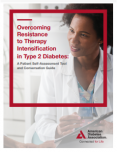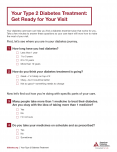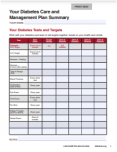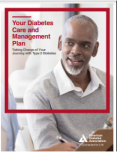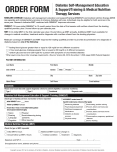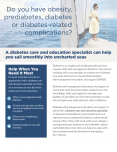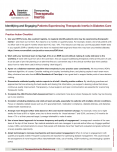THERAPEUTIC INERTIA
Patient Engagement Toolkit
Convenient Resources for Managing Diabetes
The three main pillars that can help you overcome therapeutic inertia are research, education and awareness, and collaborative barrier busting. Start utilizing these strategies in your practice today.
To help address this challenge, we have developed this Patient Engagement Toolkit. Its creation is rooted in the premise that patient-level barriers are often related to misunderstandings about the nature of diabetes and its treatment, along with social determinants of health. The Toolkit aims to support shared decision-making discussions and promote early positive conversations that can help patients move along their treatment journey in a timely manner.
The successful use of this toolkit’s resources is predicated on the implementation of certain best practices for patient-centered care, including:
- Creating a personalized diabetes care plan for each patient
- Setting a shared A1C goal and a time frame in which to meet it
- Consistently screening for social and emotional barriers and subsequently making referrals to support resources, including diabetes self-management education and support (DSMES)
- Using a team-based approach and leveraging staff practicing at the top of their license
Download Tools to use with Your Patients
Utilize these resources to help establish the right therapeutic plan for your patients. Either download the entire toolkit or choose those most relevant to your practice and your patients.Access the Consumer Guide Now
The consumer guide is an online tool containing easy-to-use information on the latest diabetes medications and devices.Assessment Tools
Early and consistent assessment of self-management barriers is critical to diabetes treatment success. Below are some resources to help assess social determinants, diabetes distress, and depression, among other thing.
Fact sheets
Download these fact sheets and share them with your patients to help improve understanding of diabetes and diabetes self-management.
